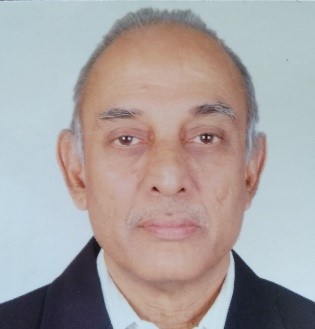
Prof. Ananthakrishnan is an internationally and nationally known radio astronomer and radio scientist, He had a brilliant academic career and got his BSc (Hons), BTech and MTech (1966) degrees from Calcutta University and later his PhD (Radio Astronomy- Physics) degree from the Tata Institute of Fundamental Research (TIFR) and University of Bombay (Mumbai), India in 1976.
He was a J C Bose National Science Talent scholar during 1961-’66 and an academic member of TIFR, Mumbai, since 1966 and was deeply involved in the construction, commissioning and operation of two major radio astronomy facilities, known as the Ooty Radio Telescope in 1970 and the Giant Metrewave Radio Telescope (GMRT) in 1999. He was the Project Scientist and Head of Electronics and Control Systems of GMRT during 1989-2000 and commissioned GMRT in 2001 and was its Observatory Director till 2004 and retired from TIFR as a Senior Professor in 2007. Since then, he has been an Adjunct Professor in the Electronic Science department of Pune University (now called Savitribai Phule Pune University). He was a DAE-BRNS Raja Ramanna Fellow during 2007-2012 and held an INSA Senior Scientist fellowship from 2013-16. He is an INSA Honorary Scientist from January 2017. He teaches and trains the MSc and PhD students of the Electronic Science dept., on Antennas, Electromagnetics and Communication systems.
An elected Fellow of all the major national science academies of India, Prof. Ananthakrishnan was given the prestigious INSA International Vainu Bappu Memorial Award 2010 for his outstanding contributions in setting up the large Ooty Radio Telescope and the Giant Metrewave Radio Telescope and in making extensive observations of radio sources using the telescope. He was an elected Vice-President of the International Radio Science Union (URSI) during 2011-2017, after having been the Chairman of one its commissions (J) during 2008-2011. He was also the President of INC-URSI of INSA from 2004 to 2012. He has published 130+ papers in National and International Journals, which have a large citation. He has worked in various international institutions in USA, Germany, Australia, Sweden, South Africa and China and has collaborated with a large number of scientists.
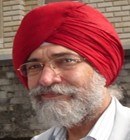
Prof. Lakhina obtained his MSc (Physics) degree from Indian Institute of Technology (IIT), Delhi where he also obtained his Ph.D. degree (1972) in Plasma Physics. He worked as a post-doctoral fellow at the Physical Research Laboratory (PRL) during 1972-1973. He joined the Indian Institute of Geomagnetism (IIG), Mumbai in 1973. Prof. Lakhina started the Space Plasma Physics group at IIG, Mumbai. He became the Director of IIG in 1998. At present, he is a NASI-Senior Scientist Platinum Jubilee Fellow at the Indian Institute of Geomagnetism, Navi Mumbai.
Prof Lakhina was the Alexander von Humboldt Fellow at Ruhr University, Bochum, Germany (1981-1982, and May-December 1985); Visiting Scientist at Courant Institute of Mathematical Sciences, New York, USA (1988-1989); NASA Senior Resident Research Associate at Jet Propulsion Laboratory (JPL), NASA, USA (September 1996 – June 1998) and Visiting Professor at Research Institute for Sustainable Humanosphere (RISH), Kyoto University, Japan (February –July 2005).
His research interests are mainly on theories for a nonlinear coherent cyclotron interaction between electromagnetic whistler mode chorus and energetic electrons, generation mechanism for electrostatic solitary waves (ESWs) in terms of ion- and electron-acoustic solitons and double layers. He has investigated the interplanetary causes of intense and super-intense magnetic storms, including the classic work on the 1859 Carrington superstorm. He has contributed extensively to the modelling of the mirror mode (MM) structures occurring in planetary magnetosheaths and the magnetic decreases (MDs) that occur in the interplanetary space.
Prof. Lakhina is an elected fellow of INSA, NASI, and IGU. He has received Decennial Award-Gold Medal, IGU (2000), Prof. K. R. Ramanathan Medal from INSA (2005), COSPAR Vikram Sarabhai Medal from COSPAR and ISRO (2014) and Space Weather and Nonlinear Waves and Processes Prize from AGU (2015).
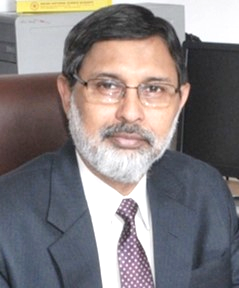
Dr Sen Gupta was the holder of the National Science Talent Search scholarship by NCERT during 1969-79. He received his M. Sc. and Ph.D. degrees in Physics from the University of Delhi, India, in 1974 and 1980, respectively. His Ph.D. work involved experimental and theoretical studies of traveling ionospheric disturbances using satellites. In 1979, he joined the Time Standards section of the National Physical Laboratory, New Delhi. He superannuated from NPL in March 2015 as its Acting Director holding the position of Outstanding Scientist. At present he holds an honorary visiting position at the NorthCap University, Gurugram, India
Dr Sen Gupta’s research interests during his PhD and in the early years at NPL involved studies of upper atmosphere and VLF radio propagation studies. Subsequently, he was engaged in research on extremely accurate time synchronization using the Indian domestic satellite INSAT. This work has led to the INSAT time broadcast service, which has been widely used in India. During the eighties Dr. Sen Gupta was associated with the Indian Antarctic research program. He was one of the youngest members of the first Indian Antarctic Expedition in 1981-82, where he performed experiments related to radio propagation and Ozone studies. He was a member again of the second Indian expedition in 1982-83 and finally in 1988-89 he was selected to lead the eighth Indian Antarctic Expedition, in which he and his team members set up the permanent Indian Antarctic Station ‘Maitri’. In recent years he has been mainly engaged with research on development of atomic frequency standards and a new generation of microwave synthesizers for atomic frequency standards. These ultra-precise atomic clocks are known as Cesium fountains. He also initiated and led a research group at CSIR-NPL to develop an optical clock, based on a single trapped ion of Ytterbium. During his research career, he has spent extensive periods at the NIST (USA) and PTB (Germany).
Dr. Sen Gupta is a Fellow of the National Academy of Sciences, India, Fellow of the Institution of Electronic and Telecom Engineers (IETE), India, former President of the Metrology Society of India and a Senior Member of the IEEE, USA. He was awarded the prestigious O. P. Bhasin Foundation award for Science and Technology for the year 2002 for outstanding contributions in the field of Electronics and Information Technology.
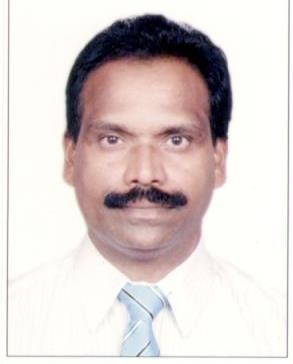
Prof. Paulraj, received his Ph.D. degree in environmental Sciences (bioelectromagnetic) in 2000. He did his post sponsored by Indian council of Medical Research at JNU and joined as Assistant Professor at School of Environmental Sciences, Jawaharlal Nehru University (JNU) in 2004. Presently, he is serving as Professor in JNU.
He was the recipient of the Young Scientist Award by the International Union of Radio Science (URSI) Toronto, Canada, in 1999. He received Gold medal in BSc.
Prof. Paulraj has about twenty years of teaching and research experience. His area of expertise is bioelectromagnetics, nanotoxicology and environmental cancer biology. He has published more than 60 research papers in various national and international scientific peer reviewed journals related to electromagnetic radiation, nanotechnology and cancer biology. He has supervised 12 PhD and 12 M Phil students
His group is engaged in several extramural ongoing projects. He has participated, delivered lectures and chaired scientific sessions over 70 national and international conferences/ symposia/ workshop. Prof Paulraj has organized several International/National Conferences.
Prof Paulraj is a member of various Scientific bodies, such as Commission K, Indian committee for International Union of Radio Science (INCURSI), Microwave Application Society of India (MASI), Indian Biophysical Society, Cancer research and care academy (CRCA), Indian Nano biologist Association (INBA) etc.
He is an editorial board member of Scientific Journal: Reactive Oxygen Species (ROS). In addition to his teaching and research he served as University proctor for 2 years, currently he holds administrative posts as Director (legal) and Provost (Poorvanchal), JNU.
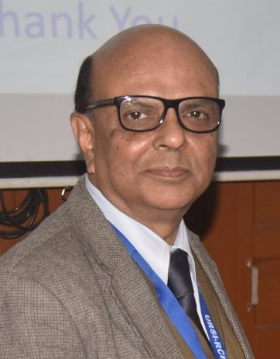
Prof. Animesh Maitra received the Ph.D. degree in Radio Physics and Electronics from the University of Calcutta in 1984. He joined the Institute of Radio Physics and Electronics as a Lecturer in 1983 and later became a Professor and the Head of the Institute.
He was a recipient of the Young Scientist Award by the International Union of Radio Science (URSI) in 1987. He received a Commonwealth Academic Staff Fellowship at the Rutherford Appleton Laboratory, Didcot, U.K., from 1988 to 1989. He was also a British Council Visitor and a Royal Society-INSA Exchange Visitor at several universities in the U.K. from 1986 to 2002.
Prof Maitra has served as the Director of the S. K. Mitra Centre, University of Calcutta, from 2007 to 2017. He is currently a UGC Basic Science Research Faculty at the Institute of Radio Physics and Electronics, University of Calcutta, where he leads a large research group that set up an extensive experimental facility for microwave sensing of the atmosphere, earth-space propagation studies and aerosol measurements. He has so far successfully guided 16 PhD students. He has contributed to about 240 publications addressing the impact of the tropical atmosphere on satellite communications, remote sensing and space and atmospheric sciences.
Prof. Maitra has served as a member of several national bodies including National Committee of COSPAR-URSI-SCOSTEP, Programme Advisory Committee on Atmospheric Sciences of SERB, DST, Scientific Advisory Committee of Space Physics Laboratory, VSSC (ISRO), Trivandrum. He was the Founding Chair of IEEE GRSS Kolkata Chapter. He is a Fellow of West Bengal Academy of Science and Technology (WAST), Life Fellow of IETE, Senior Member of IEEE and the Indian Representative in URSI Commission F.

Prof. Janardhan Padmanabhan joined the Physical Research Laboratory (PRL), Ahmedabad, India, as a Research Fellow in the Radio Astronomy Division in 1985. He received his PhD in 1991 for his work on measurements of interstellar scattering at 103 MHz through interplanetary scintillation measurements of strong extragalactic radio quasars, and for cometary studies during radio source occultation by their plasma tails. After his post-doctoral work at the Radio Astronomy Centre, Ooty, TIFR, he joined the Physical Research Laboratory as a Scientist – SD, in the Astronomy and Astrophysics Division in 1993. His primary research interests are in radio studies of the Sun, the solar wind, space weather, solar magnetic fields, cometary studies, and in recent times, studies of astrochemical ices as interstellar laboratories for formation of complex molecules.
Prof. Janardhan superannuated as a Senior Professor (H) and Dean, PRL in addition to being the Principle Investigator (PI), until 2021, of the Aditya Solar Wind Particle Experiment (ASPEX) payload on-board ISRO’s ADITYA–L1 mission – a dedicated solar mission, due for launch in 2022. He is also a member of the science team of the Solar X-Ray Monitor (XSM) payload on-board the Chandrayaan-2 orbiter, which is currently operational.
Prof. Janardhan received the prestigious Alexander von Humboldt Foundation (AvH) Research Award in Astrophysics for the year 1996 from the AvH, Bonn, Germany; the Vikram Sarabhai Research Award for Space Sciences in 2003; and the ISRO Merit Award in 2015 in recognition of meritorious contributions to the Indian Space Program. He is an elected fellow of the Indian National Science Academy (INSA), New Delhi, and a member of several international scientific bodies like the Union Radio-Scientifique Internationale (URSI), the International Astronomical Union (IAU), and the American Geophysical Union (AGU).
He has held various positions outside India. He worked at the Radioastronomisches Institüt, Bonn, Germany, 1996-1997; he was a Research Associate in the Astronomy Division of the University of Maryland, USA in 1999-2000; and a Visiting Researcher, at the Instituto Nacional de Pesquisas Espaciais (INPE), Brazil in 2007-08. He has also held visiting professorships at the Institute for Space-Earth Environmental Research (ISEE), Japan; and at the Department of Applied Mathematics and Theoretical Physics (DAMTP), Cambridge, UK.
Prof. Janardhan has produced several PhD’s, mentored a large number of post-doctoral fellows at PRL and has close to a 100 peer reviewed scientific publications and he continues to be active in his field.
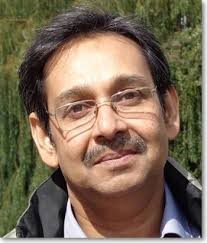
Debatosh Guha is a Professor of the Institute of Radio Physics and Electronics, University of Calcutta, India and formerly HAL Chair Professor of the Indian Institute of Technology Kharagpur. He is Abdul Kalam Technology Innovation National Fellow. Prof Guha received his B.Tech and M.Tech degrees from the University of Calcutta in 1987 and 1989 respectively. After graduating with a Ph.D. in microwave engineering from Calcutta University, he joined the same University as an Assistant Professor in 1994.
His research interests include Defected Ground Structure (DGS) for advanced antenna design, Dielectric Resonator Antennas with unconventional modes and feeding structures, improving cross-polarization issues of printed antenna and arrays, theory and design of resonance gain antenna for pattern synthesis and advanced feed designs. He has published over 200 papers in top Journals and Conferences along with a book on ‘Microstrip and Printed Antennas’ from Wiley, UK, 2011. He developed wireless base-station antennas for a North American industry, which have been a commercial product (Z1900) since 2007.
Professor Guha is Fellow of IEEE, Indian Academy of Sciences (IASc), Indian National Academy of Engineering (INAE), The National Academy of Sciences, Indian (NASI), and West Bengal Academy of Science and Technology (WAST). He is a recipient of some notable awards which include IETE Ram Lal Wadhwa Award (New Delhi 2016), IEEE AP-S Raj Mittra Travel Grant Award (Chicago 2012); URSI Young Scientist Award (Lille, France 1996).
He is presently the Vice-President of West Bengal Academy of Science and Technology and Commission-B Chair in the Indian National Committee for URSI. He has served IEEE Transactions of Antennas and Propagation and IEEE Antennas and Wireless Propagation Letters as an Associate Editor. He has been serving IEEE Fields Award Committee (2017-2019), IEEE AP-S MGA Committee (2021-), and IEEE Technical Committee on Antenna Measurement (2021-)
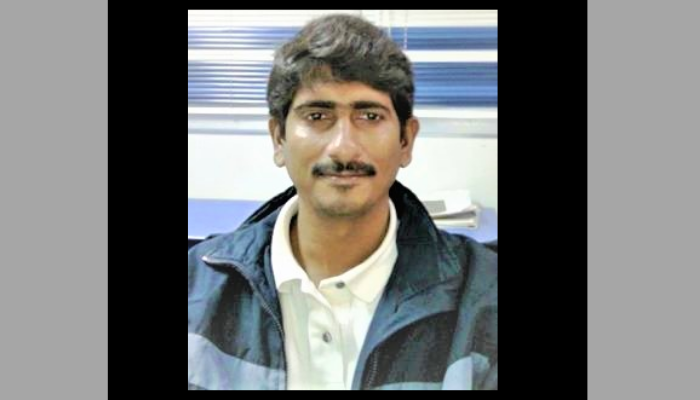
Prof. Anantha Ramakrishna received the M.Sc. (integrated 5 years) degree in Physics from IIT Kanpur, in 1995 and the Ph.D. degree from the Raman Research Institute, Bengaluru, in 2001. He worked on theoretical aspects of light propagation in random media including temporal signatures of Anderson localization during his PhD and was supervised by the Late Prof. N. Kumar. After working as a Post-Doctoral Researcher with Sir John Pendry at Imperial College London, he joined IIT Kanpur as an Assistant Professor in 2003 and became a Professor in 2012. He joined CSIR-CSIO as Director on 27 July 2020 on lien from IIT Kanpur.
Prof. Ramakrishna has worked in the area of metamaterials and plasmonic nanostructured materials and has published over 115 papers in refereed international journals, about 70 papers in conferences and a research monograph entitled “Physics and Applications of Negative Refractive Index Materials”. His works on metamaterials and plasmonics have drawn enormous attention from the scientific community and have been highly cited. He has proposed, for the first time, several new concepts such as: the use of amplifying media in metamaterials and plasmonic structures, the first use of transformation optics to negative index materials, first design for optical frequency metamaterials, first demonstration of negative refraction in acoustic metamaterials, a proper explanation of the choice of the negative root for the wave vector in negative index media coherent control of metamaterials by atomic / molecular resonances, anisotropic metamaterial fibers and so on. His work on the traversal times for light in dispersive media has also been important in understanding light propagation in dispersive media.
His current research interests include technological applications of metamaterials and plasmonics.
Prof Anantha Ramakrishna has been a recipient of the Swarnajayanti Fellowship 2012 by the Department of Science and Technology, India. He was awarded the prestigious Shanti Swarup Bhatnagar Prize 2016 by CSIR, India
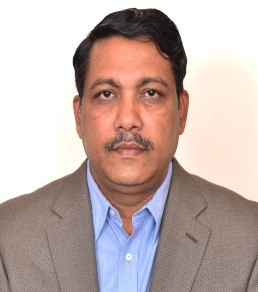
Dr. A K Patra received the Ph.D. degree in Physics from Sri Venkateswara University in 1998. He carried out his Ph. D. research works on radar probing of ionospheric plasma irregularities from National MST Radar Facility (now National Atmospheric Research Laboratory (NARL)). He joined as a scientist in Space Physics Laboratory (SPL) of Vikram Sarabhai Space Centre (VSSC), Trivandrum in 2000. Subsequently, he moved to NARL on inter-departmental transfer in the same capacity and continued his research carrier at NARL till date.
Dr. A K Patra is currently the Director of NARL. Dr. Patra’s interest includes radar and radio probing of atmosphere and ionosphere, ionospheric electrodynamics and plasma irregularities, space weather. He has so far successfully guided 8 Ph. D. students. He has authored/co-authored 126 peer-reviewed research papers addressing various aspects of ionospheric plasma irregularities and instabilities, coupling processes, space weather issues, and radio probing techniques.
Dr. Patra is a recipient of ‘PRL Award’. He is a Fellow of the Indian National Science Academy (INSA) and Indian Academy of Sciences (IASc), He is a research supervisor guiding Ph. D. students at IIST, S V University, Pune University, University of Calcutta, Satyabhama University, SRM University, and Andhra University.
He serves as member of several national committees, which include INSA Joint National Committee for COSPAR-URSI-SCOSTEP; URSI Commission-G INCURSI; Apex Science Board, ISRO; Scientific Advisory Committee of ARIES; Scientific Advisory Committee of SPL, VSSC; Expert Committee of EPS, SERB; PIC, SERB sponsored Calcutta University ST radar project, Regional Science Centre, Tirupati; Academic Council, SVCET. He also serves as an International Expert of the MU radar-EAR Advisory Committee, Kyoto University.
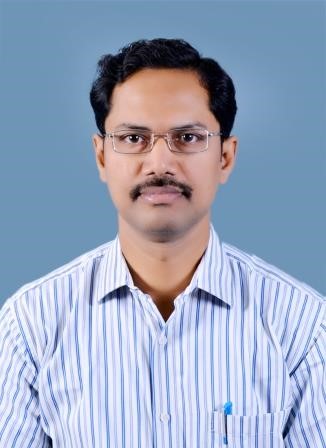
Dr T. V. Chandrasekhar Sarma obtained B.Tech. (ECE), M.Tech. (Commn. Eng.) and Ph.D. respectively from S.V.U. College of Engineering, IIT Bombay and Kyoto University. He worked at Society for Applied Microwave Electronics Engineering and Research, Mumbai on development of MST Radar subsystems during 1991-94. Since 1994 he has been working at the National Atmospheric Research Laboratory (NARL), Gadanki. His research interests include development of atmospheric sensing techniques, radar signal design, radar signal processing and flight instrumentation. Dr. Sarma is a fellow of the IETE, Senior Member of IEEE and a member of URSI, OSA, the AGU, and the Acoustical Society of India.
